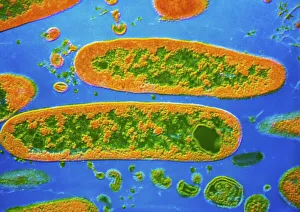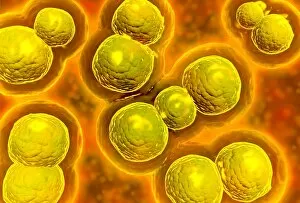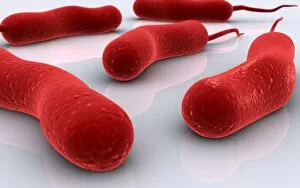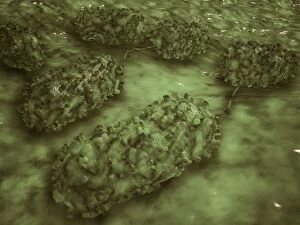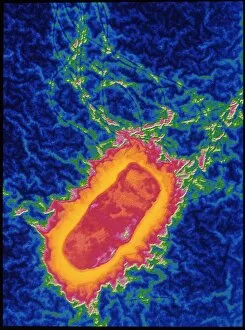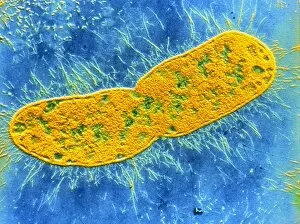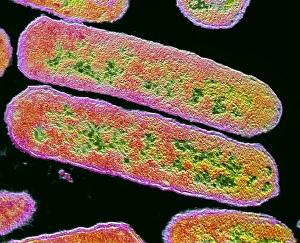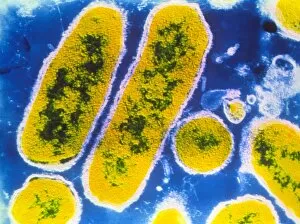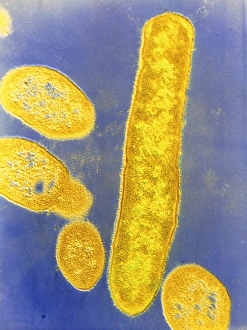Gram Negative Bacteria Collection
Gram-negative bacteria are a diverse group of microorganisms with unique characteristics that set them apart from their Gram-positive counterparts
All Professionally Made to Order for Quick Shipping
Gram-negative bacteria are a diverse group of microorganisms with unique characteristics that set them apart from their Gram-positive counterparts. This captivating image showcases the coloured transmission electron microscopy (TEM) of Yersinia pestis bacteria, the infamous causative agent of the bubonic plague. Another microscopic view reveals Chlamydia, an elusive bacterium responsible for various sexually transmitted infections. In this false-colour TEM image, Salmonella typhi is depicted, reminding us of its role in causing typhoid fever and gastrointestinal distress. Coxiella burnetii, known as the culprit behind Q Fever, is captured here—a reminder of its ability to cause flu-like symptoms in humans. The nanobots attacking cholera virus present a futuristic approach to combating bacterial infections. Meanwhile, a conceptual image portrays Vibrio cholerae bacteria causing cholera—an alarming reminder of this waterborne disease's devastating impact on communities worldwide. Microscopic views offer glimpses into other notorious pathogens: Legionella pneumophila and Borrelia burgdorferi—the culprits behind Legionnaires' disease and Lyme disease respectively—remind us how these stealthy invaders can wreak havoc on human health. Escherichia coli or E. Coli cells are also featured here; these versatile bacteria have both beneficial and harmful strains that play significant roles in various biological processes and infectious diseases alike. Lastly, a conceptual image captures the elegance of flagellate bacterium movement—a testament to the remarkable adaptability and survival strategies employed by Gram-negative bacteria. These captivating images provide insights into the fascinating world of Gram-negative bacteria—microscopic organisms that continue to challenge our understanding while shaping our lives through their complex interactions with humans and ecosystems alike.

